
New wearable technology can measure blood sugar using sweat
Understanding blockchain, cryptocurrency and NFTs with Zehua Wang
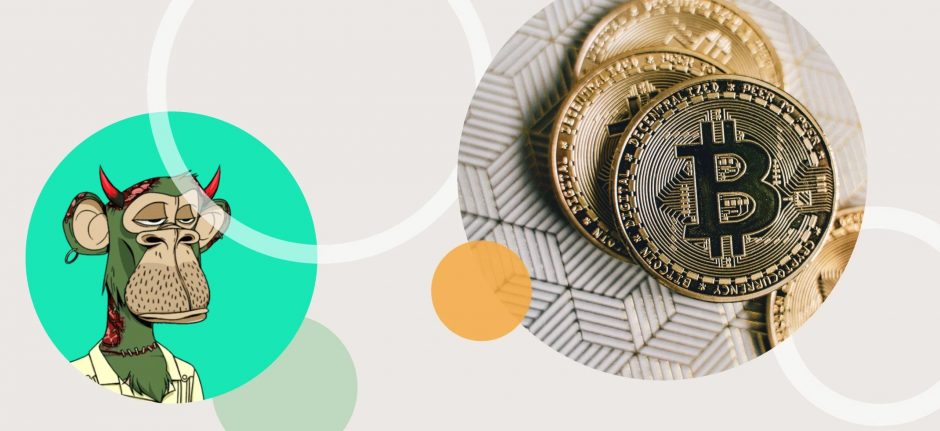
Crypto assets and the mechanisms that support them can seem, well, cryptic. Dr. Zehua Wang, adjunct professor in the Department of Electrical and Computer Engineering and part of the Blockchain@UBC research cluster, explains the basics to UBC Beyond.
Read More from UBC Beyond
ECE Perspectives: Kumseok Jung, ACM/IEEE Symposium Best Demo Award Winner

“Active exchange with the industry is exciting; our work could be immediately applied in the real world.”
Kumseok Jung is a PhD student at Electrical and Computer Engineering, and part of the Dependable Systems Lab, working on robust and dependable edge computing applications. His group has developed an innovative solution for developers working with Internet of Things (IoT) devices; a program called OneOS, that would make programming many different kinds of IoT devices simpler and easier for developers. This solution, co-developed with Julien Gascon-Samson and Karthik Pattabiraman, recently won the Best Demo Award at the ACM/IEEE Symposium on Edge Computing (SEC) conference.
We spoke to Kumseok to learn more about how this solution works, the process behind its development, and how this award-winning research will impact the industry.
Congratulations! How do you feel about your “Best Demo” award?
I spent a lot of time building a good-looking demo, so it feels good to be acknowledged for the effort that went into it. More than the award itself, I was happy that the experts in my field were visibly impressed when I presented my live demo.
What is the topic of your award-winning project?
OneOS involves grouping together a bunch of Internet-of-Things (IoT) devices (e.g., smart bulb, smart TV, smart fridge, etc.) so that they look like one giant computer to a user like you and me.
When we look inside of a computer or a smartphone, there are several tiny components connected to one another, continuously exchanging data and coordinating with each other to present to the user a single “personal computer”. Today, programmers can easily write apps for such a computer, since we have standardized programming tools. But when it comes to writing apps that involve multiple IoT devices, programming is not so easy, because the programmer has to think about the differences between the devices and how the devices would exchange information.
To make programming easy for IoT devices, my idea is to think of the devices as components of a single giant computer connected over the Internet. This way, we can continue to use the standardized programming tools, and users will be able to simply download and run IoT apps.
What is the future of your initiative? How can your project impact the industry?
The idea I’m pursuing is actually something that has been explored by academics and industry experts, going back to the 1980s and 1990s in the form of “distributed operating systems”. This idea was more appealing back then, when personal computers and Internet usage was not as common and a computer was more of an expensive, shared resource. Since then, the industry and the market have moved on to personal computers and web services.
However, recently we’re seeing a rise in cloud/edge computing, where computers are becoming shared resources again. Big players in the industry are already taking steps into this future of cloud/edge computing, in the form of virtual machines and containers, but not exactly distributed OSes. Perhaps my project would remind the industry that this is the right time to explore this idea again.
What was the process of developing this research like?
This work has taken many turns along the way, sometimes undergoing a complete overhaul. In the beginning, my research group sketched out a design of an IoT platform called “ThingsJS”, by listing out the constraints that are specific to the IoT domain, and coming up with potential solutions. We had a team of graduate students (including myself) carrying out the research work, undergraduate students helping out with writing the code and running the experiments, and my advisor and industry experts providing feedback and new ideas. Along the way, we identified sub-projects that needed to be prioritized, and published papers on the individual solutions we came up with.
After ThingsJS had matured to a certain point, we had identified limitations that could only be overcome by fundamentally altering the design. We forked the project into OneOS, and started to build the system from scratch. That said, we were able to work more quickly as we had quite a lot of software artifacts, experience, and insight by then.
What interests or excites you about this area of research?
Doing research in systems engineering in cloud/edge computing is fast-paced, and involves a lot of communication with the industry. Our work was sponsored by Intel, and attracted interest from industry experts at Microsoft, Samsung, and Huawei. This active exchange with the industry is exciting; our work could be immediately useful and applied in the real world.
What has your career path been like so far? Where do you hope you’ll go in the future?
I have been alternating between being in academia and in industry so far. After getting my bachelors at UBC, I returned to UBC as a masters student after a 3-year stint as a software developer. I went on a brief internship at Microsoft Research India towards the end of my masters, and then I came back as a PhD student to continue my research work. I enjoy the freedom to explore ideas as an academic, and I also enjoy building real systems that are applied in the industry. I hope to find a place where I can continue to do research that can have real world applications.
Read more about OneOS or watch the demo
Learn more about Kumseok Jung
Read more about the Dependable Systems Lab
ECE Professor Julia Rubin appointed Canada Research Chair
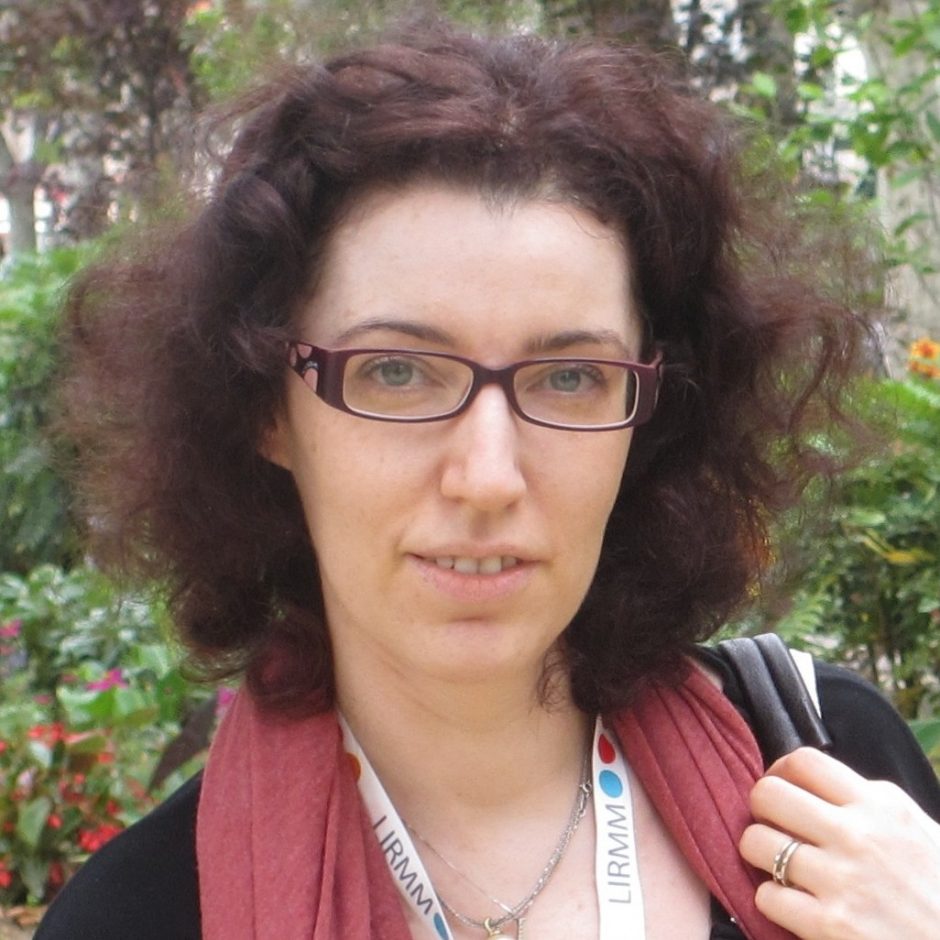
ECE Professor Julia Rubin has been appointed as Canada Research Chair, one of four UBC Applied Science faculty members to be appointed to this prestigious position this year.
The Canada Research Chair program supports the nominated chairs in achieving research excellence in their fields. These individuals are some of the most outstanding scholars in Canada and are investigating a wide range of critical topics across the arts and sciences. The Canada Research Chairs program, says Roseann O’Reilly Runte, President and CEO, Canada Foundation for Innovation, “enables universities to retain and attract top researchers to Canada and allows all Canadians to benefit from their important discoveries.”
Dr. Rubin has been named Canada Research Chair, Tier II, in Trustworthy Software. Her research focuses on devising new theories and approaches to make software and machine-learning-based systems more trustworthy: reliable, secure, explainable, and fair. By leveraging and contributing to the fields of automated program analysis, formal methods, trustworthy machine learning, and empirical software engineering, Dr. Rubin and her research group develop new quality assurance machanisms, improving the quality of the software that we use and making developers more efficient and productive. Dr. Rubin’s work in these areas won five Distinguished/Best Paper Awards at major conferences such as ASE’15, ISSTA’18, and ICST’21.
Dr. Rubin serves on program committees of several flagship conferences in software engineering, such as ICSE, FSE, and ASE. She co-chaired the program committees of SPLC’14, ECMFA’14, FASE’17, CASCON’20, and will co-chair the program committee of ASE in 2022. She has also contributed to the scientific community by serving on the IEEE TCSE Executive Committee and chairing several award selection committees, such as the IEEE TCSE New Directions Award Committee in 2020.
Find out more about Dr. Rubin’s work.
Read more about the 2022 Canada Research Chairs.
Interview with Siavash Alamouti: ECE Alumnus, Communications Changemaker, and Marconi Prize Winner
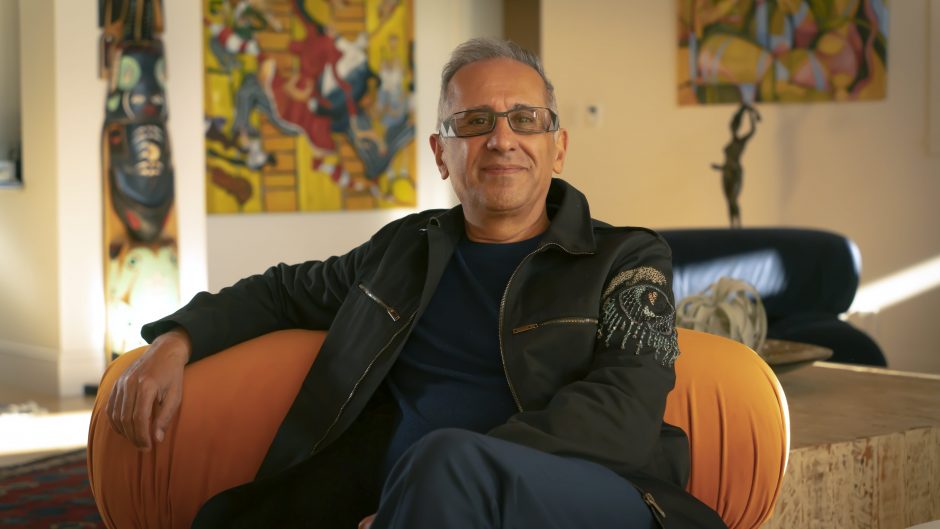
“We must provide people with equal access to information and knowledge, [and] I’ve made it a mission for myself to use technology to achieve this goal.”
UBC Electrical and Computer Engineering alumnus Siavash Alamouti is a recognized innovator and leader in wireless communications and the cloud. If you’ve studied wireless systems, his name might be familiar; he’s the inventor of the famous Alamouti code, a milestone solution in mobile signal reception technology that’s included in billions of devices around the globe.
Siavash has been a leader and researcher at multiple top companies including AT&T, Intel, and Vodafone. He’s been on the cutting edge of communications technology for many years, and was instrumental in the development of 5G and LTE standards worldwide. Siavash is now working towards the decentralization and democratization of the cloud and personal data use. Influenced by his background in activism and his experience of the Iranian cultural revolution, he’s a dedicated advocate for technological solutions that prioritize the rights and needs of their users.
Since his time at ECE, Siavash has believed strongly in the potential of wireless innovation to improve people’s lives. In recognition of his impact on the accessibility of wireless devices, Siavash has been awarded the 2022 Marconi Prize, the top honor in information and communications (ICT) technology. This prize (whose past winners include World Wide Web inventor Tim Berners-Lee and Google co-founders Lawrence E. Page and Sergey Brin), is awarded to ICT innovators who have made a significant contribution to increasing digital inclusivity. Siavash’s award recognizes his dedication to the power of wireless technology as a democratizing force.
We spoke to Siavash about his work and this significant recognition. In this interview, he discusses his long and varied career, his time at UBC, and the insights and inspirations that lie behind his work on wireless technology and decentralized cloud infrastructure.
How did your career begin, and how did you get from there to where you are now?
I’ve had a rather unusual career path because of my life circumstances. My career started very early when I was 17, as a young entrepreneur with a small fashion brand in Tehran, before the 1979 Iranian revolution. After the hijacking of the revolution by Muslim fundamentalists, I was expelled from my university, went underground, and worked selling English encyclopedias and other books. I escaped Iran in 1982 and entered Spain as a political refugee. I attended university in Madrid and worked as an English tutor, an Avon salesperson, and even sold cigarettes and gum in concert venues. When I moved to Vancouver, I worked various jobs, including pizza delivery and waiting tables for a couple of restaurants. My career as an engineer started with contract work for a company called Mobile Data International (MDI) while I was completing my master’s degree at UBC. I then took a leave of absence from the Ph.D. program at UBC to join Microtel Pacific Research (MPR Teltech) as a Member of Technical Staff.
MPR Teltech was the research arm of BC Telephone Company (now Telus), which was later broken up into various companies. It was a pioneering company that was building mobile data protocols such as Cellular Digital Packet Data (CDPD). There, I participated in the physical and MAC layer design of this mobile data protocol, which provided 19.2 Kbits/sec of data through cellular base stations. In 1995, I moved to Redmond, Washington to join McCaw Cellular, which was later acquired by AT&T and became AT&T Wireless Services. I invented the Alamouti Code while I was there, but was very skeptical about the multi-billion-dollar project we were working on. I blew the whistle, was demoted, and left in 1998 to join Cadence Design Systems in Milpitas California. While at Cadence, I worked as an application engineer building Electronic Design Automation (EDA) libraries for 3G and WiFi chips.
In 2001, I joined a startup called Vivato, based in San Francisco and Spokane, Washington- initially as the R&D Director and eventually as the CTO. Vivato was the first smart antenna WiFi company to build a WiFi access point with 2 km of range. I left Vivato in 2004 to join Intel as the CTO of the Mobile Wireless Group, where shortly after I became an Intel Fellow. This is where I worked on Mobile WiMAX, with the goal of creating an open cellular standard. This work was highly influential on 4G LTE technology, which adopted OFDM/MIMO technology that was significantly superior to the old 3G technology and less burdened with royalty costs. While I was at Intel, I also championed the formation of WiGig Alliance to use mmWave technology for Gigabit wireless communications.
In 2010, I joined Vodafone as Group R&D Director and moved to London, where we envisioned many non-traditional new services for the largest global mobile operator at the time: remote patient monitoring, elderly care, usage-based insurance, child and pet tracking services, automotive solutions, and the world’s first concept design for an edge gateway. I also oversaw Vodafone’s corporate venture entity and a portfolio of startup companies. In late 2013, I left Vodafone to initially pursue an investment fund for personalization, but I eventually moved back to Vancouver, as my father had been diagnosed with cancer.
In 2014, I joined Disternet, a startup in Vancouver and a portfolio company of Vodafone Ventures, as the CEO. We eventually renamed the company ‘mimik’. At mimik, we built the first hybrid edge cloud platform that enabled any smart device, including smartphones and sensors, to act as cloud servers. In March 2020, I joined Wells Fargo as EVP of R&D while keeping my role as the Executive Chairman of mimik. I was very concerned with the business model of the internet and data privacy, so I agreed to join Wells Fargo when I was approached by Lisa Frazier the Chief Innovation Officer, who is now the Chief Operating Officer at Judo Bank, a digital bank and one of the most successful fintech companies in Australia. I was running R&D and working on a custodianship platform for data and digital assets. I left Wells Fargo in December of 2021 and I’m now working full-time at mimik working on creating a data and digital asset custody platform.
You were a student at UBC Electrical and Computer Engineering. What aspect of your program at ECE did you enjoy the most?
I actually did my bachelor’s and master’s degrees but did not complete my Ph.D. at UBC. Life during my bachelor’s degree was extremely difficult. I had to work and study full-time, and at the same time I was very active politically, fighting against the rising right-wing attacks associated with the rise of the Reform Party, Neo-Nazis, and Fascists in Canada. At the time, one-fifth of the Canadian population had voted for an extreme right-wing party. My experience in Iran had made me very sensitive to these challenges, and I committed to do my best to stop reactionary political movements. The situation at that time was scary, and coupled with the AIDS crisis, which drove violent anti-gay attacks, serious threats to labor rights, women’s rights, and immigrant and refugee rights, it was a real struggle for me to balance school, work, and political activities.
However, the time during my master’s degree was amazingly rewarding. My supervisor was a very bright young assistant professor called Samir Kallel, who suggested a challenging but visionary project for my master’s thesis. At that time, I was in a better financial position thanks to Samir’s funding and could focus more on my studies, so I spent a lot of time and did great research work on adaptive coding, which influenced my future work that is included in wireless standards we use today. I got to work closely with great people including Eduardo Casas, who was completing his Ph.D. at the time and was one of the pioneering researchers for OFDM, which became the foundational technology for 4G and WiFi, and Professor Cyril Leung, with whom I built a longer-term working relationship while I was at MPR and AT&T. I published my first journal paper based on my master’s thesis work and planned to continue my research during my Ph.D. but had to take a full-time job to be able to support my parents and siblings and get them out of Iran, so unfortunately, I took a leave of absence from my Ph.D. and never returned.
While I was at UBC, I built my foundations of knowledge around communications theory, math, and computer programming- I owe much of my success to my studies at UBC.
Much of your work has been dedicated to democratizing and improving access to and control of technology for users. Why have you taken this approach, and why is it important to you?
My experience in Iran had shown me that, to protect society against social destruction, we must provide people with equal access to information and knowledge. This is the key to ensuring equal opportunities for all, closing the widening wealth gap and inequalities, fighting superstition, fundamentalism, misinformation, and political manipulation. I’ve made it a mission for myself to use technology to achieve this goal.
You’re currently focusing on decentralization of the cloud and data sovereignty. What are you working on in this area, and what impact do you hope this work will have?
To ensure digital inclusion, we need an affordable, efficient, private, secure, and green internet. Cloud decentralization is essential to achieve this goal. We can create a decentralized cloud infrastructure that is orders of magnitude larger than our central cloud infrastructure today. This will reduce the cost of developing and maintaining applications, will make us less dependent on network infrastructure, reduce latency, reduce carbon footprint, and provide individuals greater control over their data. It has been a challenging but extremely rewarding endeavor for me, my colleagues at mimik, and our partners because this will ultimately help make the internet more private, affordable, and greener for everyone.
As for data sovereignty it has become increasingly clear that we must change the overwhelmingly ad-driven business model of the internet and give the control of personal data back to individuals. I’ve been mostly focused on the custodianship of data and digital assets in the last couple of years and I hope to make some contributions in this area in the future.
A lot of our undergrad and grad students here at ECE are hoping to enter the industry to work on wireless systems, or the cloud. What would you say to young people who are passionate about these areas and just beginning their careers?
I can highlight some of my learnings and share them with you. Perhaps the most important thing I have learned is to stop believing and instead constantly pursue learning and discovery. Facts and actualities should be the basis of what we do in our personal and professional lives, but believing is the opposite of learning and discovering. When people who I care about tell me that they believe in something, I always ask what they plan to do with their belief. Personally, if I come to believe in something that is relevant to my life, I do my best to study and perhaps experiment to either prove it right or wrong, and turn my belief into either a fact or a fallacy. I do my best to not waste my time on projects or major undertakings based on a belief. For instance, I try not to blindly trust the latest hypes and fads. Many hyped technologies and trends are based on a self-enforcing feedback loop of unsubstantiated beliefs that often lead to collective ignorance.
Another important thing I have learned through experience is that starting with the technology and trying to find an application for it seldom results in impactful solutions. I try to always start with defining the result I’m seeking clearly and experiment with various technology solutions to help achieve the result.
A further important learning that may seem obvious, but people seldom have the courage to apply, is to not waste your time working on things that you don’t truly enjoy or have a passion to do. Life is too short. It is foolish to sacrifice the present with the hope of a better and happier future that may never come. The present is the only sure thing and should always be the priority.
Read More from the Marconi Society: “Democratizing Internet Access: 2022 Marconi Prize Awarded to Wireless Innovator Siavash Alamouti”
Sign Up For Electrical and Computer Engineering 3 Minute Thesis Heats
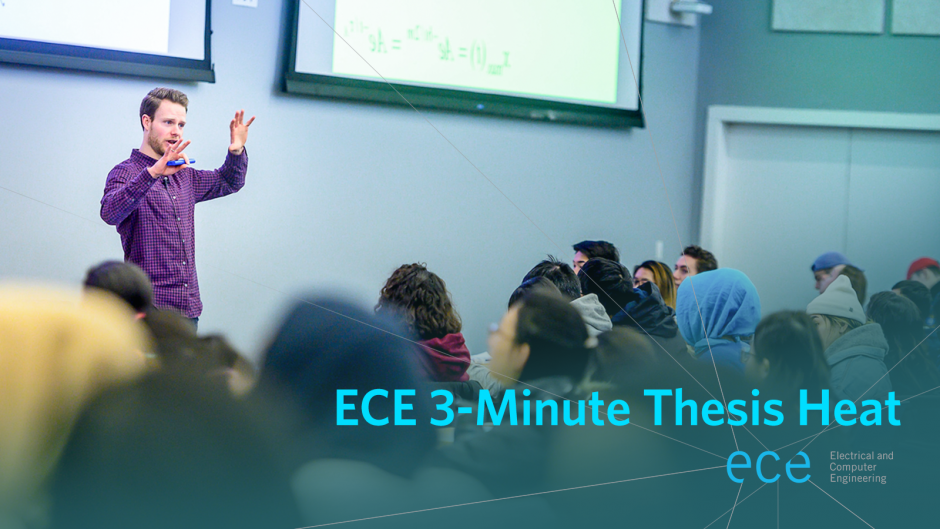
We are excited to invite all PhD and MASc students to participate in UBCs 2024 Three Minute Thesis Competition (3MT)! Our ECE heat will take place on Wednesday, March 6th at 11:00am in person in Kaiser 2020/2030!
This is one of our most popular events, with some very good benefits to consider if you are thinking of signing up as a participant! 3MT gives students the opportunity to build their presentation skills, hear about research being done by other students in ECE, and take part in a friendly competition with cash prizes for the winners!
The basic idea of 3MT is that you explain the breadth and significance of your research project to a non-specialist audience in 3 minutes or less using a single slide. This has been incredibly helpful for students preparing for their final defenses who need a low-stakes platform to practice their skills.
How to sign up:
In order to participate in our ECE heat, please send an email to help@ece.ubc.ca with the subject line “3MT 2024 – YOUR NAME”, and tell us your program of study and your student number, by 4:00pm on February 16th at the latest. Once you sign up, we will send you further information on how to submit your slide for your presentation and how to prepare.
The winners from our ECE heat will win a cash prize and be forwarded to participate in the university-wide semi-finals competition. All participants will also have a chance to take part in a practice session and receive feedback on their presentations before the event. We encourage participants to use the below for help preparing their presentation and slides. More information on the structure of the event and resources on 3MT can be found through the following links:
http://3mt.grad.ubc.ca/
http://3mt.grad.ubc.ca/participate/resources-for-participants/
If you have any questions about the competition, please email help@ece.ubc.ca. We look forward to many of you signing up!
ECE Student Perspectives: Abraham Chan, QRS’21 Best Paper winner
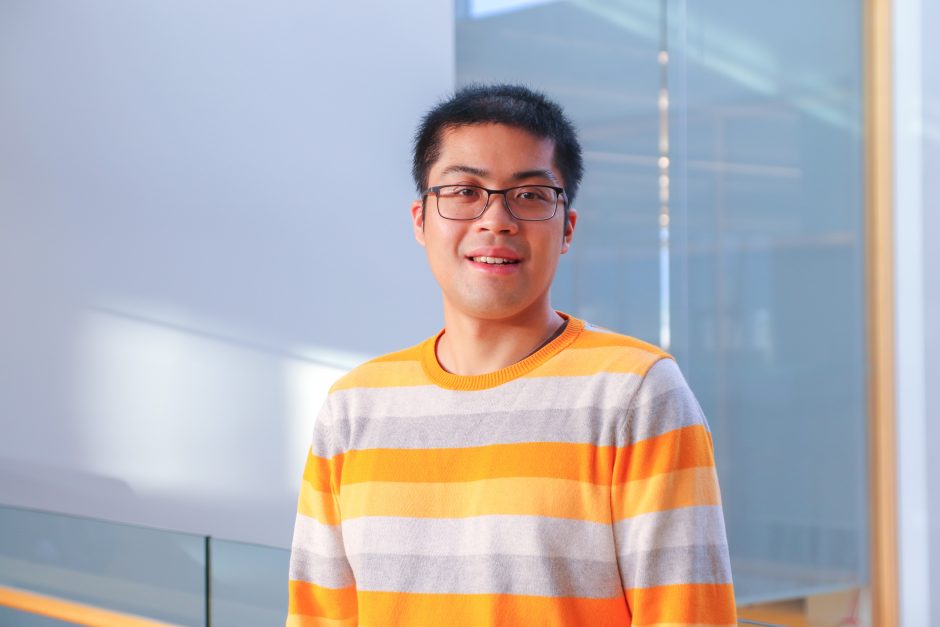
“I believe there are still large amounts of unsolved problems in machine learning, which makes for a fascinating research area!”
Abraham Chan is a PhD student at Electrical and Computer Engineering, studying Machine Learning- his research focuses on building software tools to assist developers in implementation, debugging and testing. Along with co-authors Niranjhana Narayananan, Arpan Gujarati, Karthik Pattabiraman, and Sathish Gopalakrishnan, his paper “Understanding the Resilience of Neural Network Ensembles against Faulty Training Data” won the Best Paper award at QRS’21. This paper evaluates the resilience of machine learning ensembles against faulty training data, in order to understand how to build better ensembles, ones resistant to mislabelled, missing, or duplicated data.
We spoke to Abraham to learn more about the impacts of faulty data in machine learning, the process behind this paper, and how Abraham and his colleagues’ research will affect this field.
Why is it important to research ML training data?
Machine learning (ML) is being used in many domains today, including safety-critical systems like autonomous vehicles and medical diagnoses. Unlike software programs, ML applications are driven entirely by training data; this means that the quality of the training data is very important in ensuring the correct behaviour of these applications. However, we have seen that many training datasets, even those used for training autonomous vehicles, contain mislabelled or incomplete data.
What was the process of developing this paper’s research like?
After some initial experimentation, we realized that individual ML models are susceptible to faulty training data, meaning that models can misclassify test inputs much more easily. We were inspired to explore the feasibility of using neural network ensembles to tolerate these faults by N-Version programming in traditional software engineering. Neural network ensembles consist of multiple individual networks learning in tandem and combining their results through simple majority voting. We discovered that these ensembles are actually quite effective against training data faults, and set forth to understand why and how to build ensembles that maximize resilience. We tried all different sorts of configurations of ensembles, enabling us to identify trends and devise metrics to reason about ensembles. Much like how ML applications are data-driven, our paper was largely experimental data-driven!
What are the potential uses of your research? What effect will this research have?
Most research in ML is focused on boosting the accuracy of models, with much less attention paid to the resilience of ML models against faulty training data. Hopefully, our work will be able to demonstrate that high accuracy ML models are not necessarily more resilient, and will raise awareness of the importance of quality training data when developing ML applications.
Furthermore, since we find that ensembles are an effective strategy against training data faults, our insights on ensembles can help developers improve resilience in their own applications.
What’s something unexpected about this topic?
Faulty training data, such as mislabelled, incomplete, and repeated training data, is quite prevalent in real life! For example, we encountered a study that found that 30% of a public training dataset used to train many autonomous vehicles was faulty. Unfortunately, in the age of big data and artificial intelligence, large scale data collection processes can inherently introduce faults – it’s just not feasible to manually verify all the data. However, I can assure you that you do not want to be on an autonomous vehicle that’s been trained with poor quality data!
What draws you to this field of research?
ML is a field that is still in its infancy. Concerns, like ML security and reliability, are still often overlooked or brushed aside. This is both a curse and a blessing – I believe there are still large amounts of unsolved problems in this space, which makes for a fascinating research area!
Read “Understanding the Resilience of Neural Network Ensembles against Faulty Training Data”
Connect with Abraham Chan on Linkedin
Welcome Back!
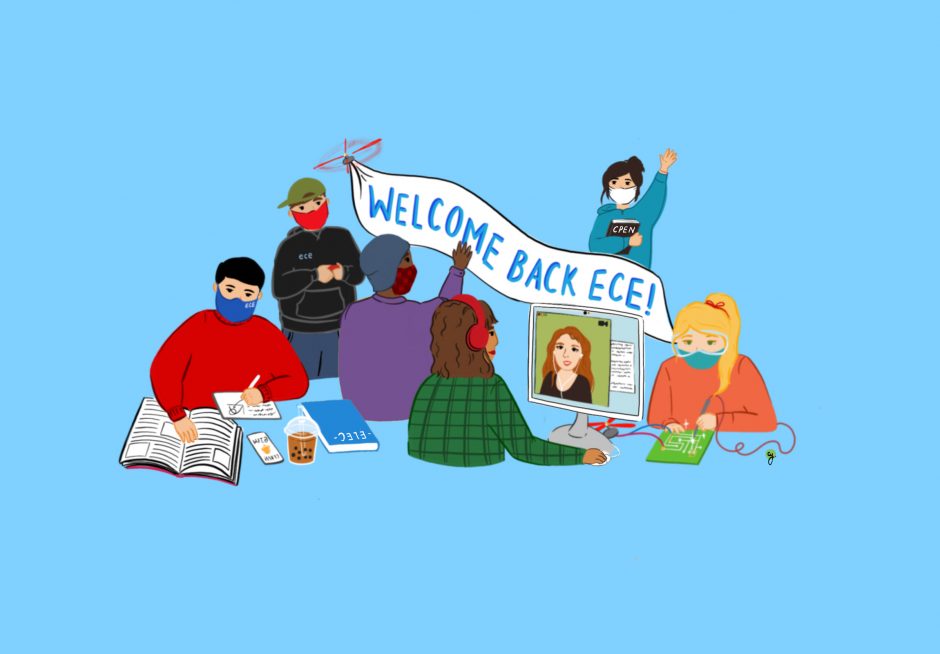
Happy first day of term 2, ECE students! We hope everyone is feeling rested from winter break and ready for their coursework.
Don’t forget that if you need advising help, you can get in touch with ECE advisors via email or on Zoom- Undergrads click here ; grads click here.
Art by Clarice Yeung.
Karthik Pattabiraman named 2021 Distinguished Scientist by the Association for Computing Machinery (ACM)
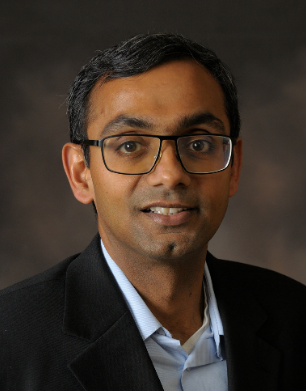
UBC Electrical and Computer Engineering Professor Karthik Pattabiraman has been named as one of 2021’s 63 ACM Distinguished Scientists by the Association for Computing Machinery (ACM).
ACM Distinguished Membership recognizes scientists with significant professional experience and notable achievements in computing. Members are chosen from leading universities, corporations and research institutions all over the world. “The Distinguished Members program is a way both to celebrate the trailblazing work of our members, and to underscore how participation with a professional society enhances one’s career growth. This award category also emphasizes how ACM’s worldwide membership is the foundation of our organization,” explains ACM President Gabriele Kotsis.
Karthik was recognized by ACM in the category Outstanding Scientific Contributions to Computing. At ECE, Karthik is a researcher in Dependable Computer Systems, Computer Security, Cyber-Physical Systems, and Software Engineering at ECE . He joined ECE from a postdoctoral position at Microsoft Research. While at Microsoft, Karthik initiated and led the Flikker project, which was one of the first papers in the field of what is now known as “approximate computing” or “good enough computing”- a term he coined. At UBC, Karthik has published more than 100 papers with his students, and 12 of these papers have received distinguished paper awards at prestigious venues such as DSN. He has also collaborated with companies such as Intel, Nvidia, AMD, IBM, Cisco, and Huawei.
Karthik is listed in the DSN conference hall of fame (as the only Canadian researcher listed). He is a vice-chair of the IFIP Working Group 10.4 on Dependable Computing and Fault-tolerance, a member of the steering committees of the IEEE/IFIP International Conference on Dependable Systems and Networks (DSN), and the IEEE Pacific Rim International Conference on Dependable Computing (PRDC).
His awards and recognitions include the Inaugural Rising Star in Dependability Award in 2020, UIUC CS department’s early career alumni achievement award in 2018, UBC Killam mentoring excellence award in 2020, UBC Killam Faculty Research Prize in 2018, UBC Killam Faculty Research Fellowship in 2016, NSERC Discovery Accelerator Supplement (DAS) in 2015, and the William Carter Dissertation Award in 2008. Of the 2021 ACM Distinguished Scientists, Karthik is the only Canadian receiving this honour.
Read more about ACM
Read more about Karthik Pattabiraman
ECE Perspectives: Sakshi Mishra, Forbes 30 Under 30

“My desire to be part of the solution for climate change problems, a keen interest in conducting research in the all-things-electrified domain, and fascination with the field of artificial intelligence – these are the key drivers that led me to the path I’m on.”